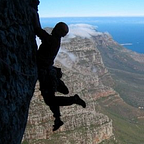If I could change one thing at Skyscanner…
You may have seen the CEO for the day competition that we’re running at Skyscanner. This got me pondering what I would do if I could change one thing here. I arrived at this conclusion: I would make usability testing and user research a definitive, integral part of our DNA. Ok, so that’s a lot to achieve in a day and is probably nowhere near as imaginative as some of the competition entries we’ll get. However, I believe it is something that would have a big impact on our company.
At Skyscanner we embrace Kaizen, the practice of continuous improvement made famous by the Toyota Production System. Genchi Genbutsu is another of its key principles: to truly understand a problem you need to go to the source and see it for yourself. It is a principle Skyscanner should adopt. For us it means learning how people actually use our product. Not how we want them to use it, or how we think they use it. Learning what their problems are and what jobs they are trying to achieve. These are solid inputs to making product decisions and help to avoid conflicts of personal opinion.
“You’ll learn more by meeting a real, live customer and spending an hour with him than you can learn from fifty research studies” — Adrian Slywotzky, The Art of Profitability.
I’ve mentioned previously that we are far too close to our own product to see what real people see when they use it. Usability testing allows us to comprehend that perspective and gain vital insights. One of the biggest benefits though is to share that experience with colleagues. Enable everyone to see real people trying to organise travel using our product. This results in everyone getting a deeper understanding of the problems we need to solve and the challenges people face. In particular let the engineers see people struggling to use our products and they will be galvanized to fix those issues. The first time I ran a usability session with an observation room for my team I was pleasantly surprised by the effect it had. The whole team spent the rest of the week talking about what they had seen and how we could improve it. Their enthusiasm and change in the way they thought about our product was quite dramatic.
I aim to do usability testing once a month now. In other internet economy companies this is something that is embedded within product development and company culture. And not just the giants of silicon valley. For example, Gov.uk do a user research session in every sprint. They have a requirement that everybody (from CEO down) needs to observe 2 hours of user research every 6 weeks. They also work hard to find customers who are not comfortable using the internet so that they can learn from them. I believe it would be hugely beneficial for Skyscanner to embrace this sort of thinking. If a branch of government can do it (and do it extremely well) we have no excuse.
Skyscanner does actually embrace change and everyone is able to influence the company’s direction. Some things take time though. I will continue to evangelise usability testing* (along with colleagues like David Hamill) and run my own sessions. Hopefully demonstrating the benefits of this will encourage more people to get involved. It’s something that I consider vital to our long-term success.
*Some people wonder why I call it usability testing and not user testing. The answer is simple: you are not testing the users, you are testing your product.
